2017 has passed, but it is an extraordinary year for the entire color TV industry. Many unexpected events occurred this year, such as Hisense’s acquisition of Toshiba TV, China Mobile TV, and smart TV’s entering the hundred-dollar era. Such incidents, all without exception set off a wave of color TV market. Next, Projection Times has specifically listed news events in 2017, and selected 10 major events for analysis, which deserves our attention.
On November 14, 2017, Hisense acquired a 95% stake in Toshiba Visual Solutions Corporation (TVS) for 12.9 billion yen, or approximately 754 million yuan. After the news broke out, it attracted a lot of attention from people both inside and outside the industry, and this incident also became the biggest event in 2017 China's color TV industry, almost overwhelming the news of double 11 color TV sales rose.
It is understood that Hisense has acquired a package of products such as Toshiba Image Solutions' products, brands and operating services, and it also includes Toshiba TV's 40-year global brand licensing. Among them, the product level involves almost all of Toshiba's "traditional display layout" such as color TV sets, commercial displays, and digital signage services; the technical level involves Japan's excellent R&D team of Toshiba Imaging, and accumulated technologies in TV picture quality, chips, and audio; In the market, Toshiba’s global use of display products and solutions for 40 years and Toshiba’s global channel partnerships for display products, as well as after-sales and technology update support services for Toshiba’s already-sold products.
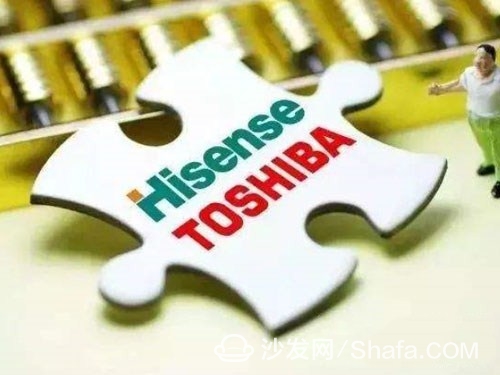
According to industry analysts, Hisense’s acquisition of Toshiba has many advantages, including brand, technology, team, channels, industry chain, word of mouth influence, and so on. First of all, after gaining the Toshiba global market, Hisense added a “market entry point†and gained a direct share of the “third place†in the Japanese market. This change is a key increase in the firming of Hisense's global top three brand status.
Secondly, Hisense's involvement in Toshiba's global market is just a supplement to the "shortcomings" of a Chinese color TV industry. This acquisition is also China's color TV, and even the home appliance industry. In the past ten years, more than a dozen of Japanese and Korean mergers and acquisitions, the only brand and technical team as the core, rather than the authority of the local market, the factory production capacity as the core of the merger.
The Japanese team has truly penetrated the color TV industry in Japan, and even the home appliance industry. These are not only unprecedented for Hisense, they are 'opening a new era' for the entire Chinese home appliance industry.
Therefore, Hisense acquired Toshiba, although the amount is not large, only 100 million US dollars, but its significance is extraordinary. This is likely to be the world's color TV brand market, China's color TV industry, the right to speak once again "quality change" and upgrade the key "weight."
Thus, Hisense and Toshiba have a common language, and the integration of the two will inevitably depend on the "cultural resonance" of the technology flow. It is believed that under Hisense's operating system, Toshiba Color TV will usher in a brand-new moment when it integrates the third largest global color TV industry chain.
Event 2: China Mobile builds TV
In September of 2017, as the world's most powerful telecom operator, China Mobile has promoted its own brand of TV sets. The explosion of this news can also be regarded as a heavyweight in the TV market.
It is understood that China Mobile and BOE have signed a cooperation agreement and the two sides have reached a cooperation on providing digital display products and systems to jointly promote the TV (IPTV & OTT) industry development of operators. BOE and China Mobile will jointly launch a number of leading large-size 4K ultra-high-definition television products, which is also China's first operator's own TV brand.
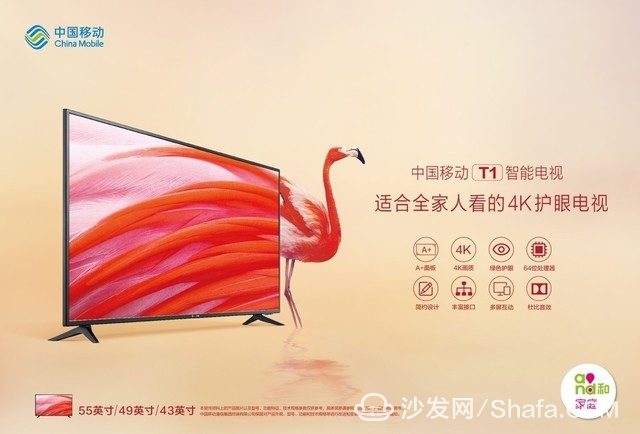
Many people may think that China Mobile is not doing business. Actually, in the era of rapid development of Internet technology, the original home entertainment equipment can no longer meet people’s increasing entertainment needs. Traditional products have been redefined and recreated in order to keep pace with market demands. It has become a general trend. After PCs and mobile phones, smart TVs are considered to be the most valuable big screen. They assume the responsibility of allowing users to return to the living room. Similarly, the study of consumer portraits points the way for the development of smart TVs.
In addition, as the smart TV market continues to heat up in recent years, more and more people are using the 30- to 39-year-old age group. The use ratio is 51.14%, and the user groups are getting younger and younger. 25.63%, young people in the future will grow into the main audience for smart TV.
Because of this, China Mobile sees potential business opportunities and is seizing the opportunity of these users to release smart TVs through the combined user experience of hardware and software. As the largest display panel company in China, BOE has advanced complete machine R&D and complete set of solutions, while China Mobile has advantages in services, channels, and content.
In a sense, the cooperation between BOE and China Mobile is an efficient integration of hardware and software resources. It is also an organic convergence of different stages of the industry chain. From the perspective of internal business logic, it is almost impeccable.
However, whether a brand-new operator's color TV product form is recognized by consumers still requires a "market awareness"-side revolution. That is how consumers see this matter. In this regard, operators already have operational experience and cognitive resources for mobile phone products, as well as IPTV's era trends and achievements. What is lacking is the consumer's understanding of the product's "professionalism."
On the whole, China Mobile's China Mobile brand operator, BOE+, is a product that is readily available. The "people" section, which needs to be supplemented, is limited to "consumer approval" - this is precisely one of the areas where operators such as giants are most adept at.
Event 3: TCL Launches New Internet Brand - Thunderbird
In the most influential event of 2017, Thunderbird, the brand new sub-brand released by TCL, was also a surprise to the entire color TV industry. Through our understanding, in fact, the launch of the Internet brand VIDAA from Hisense, Skyworth's launch of the Internet brand Coocaa can be seen, with the rise of the domestic Internet tide, so that the television industry has decades of history began to become crowded, and enter the 2017 Afterwards, the television industry has gone from being the opportunity to entering the knockout stage.
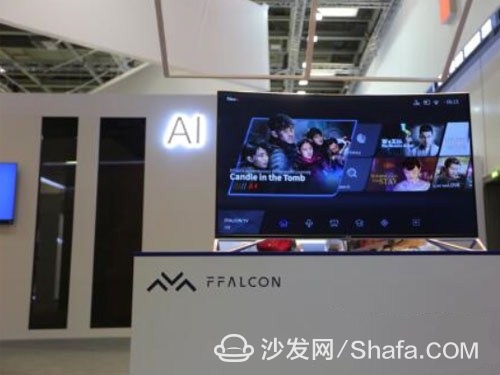
At the same time, over the past few years, there have been a number of new brands such as LeTV, Xiaomi, Microwhale, PPTV, Popularity, Storm, Kansang, 17TV, Barley, and Love Mango. Immediately become a knife. With the old production scale and technological advantages, it is now time for traditional home appliance companies to enter the Internet industry. Based on this, Thunderbird TV brand was born.
It is understood that Thunderbird, as a sub-brand launched by TCL, already has the advantages of resource allocation throughout the industry chain within TCL. This is conducive to the early hatching and growth of Thunderbird, the uncontrollable external threats are reduced, and the market risk coefficient naturally changes. small.
In addition to TCL's help in the production of Thunderbird TV, Huaxing Optoelectronics is also affiliated with Thunderbird. To know that China Star Optoelectronics has grown into the world's fifth-largest LCD panel maker, its shipments of LCD panels of different sizes will also be affected. Bird TV's capacity has a key support.
From the published price point of view, Thunderbird did not pursue the vanity of scale, because it did not use some Internet brands as a bargaining price, killing the brand manufacturers to appear straight out of the way.
Thunderbird now looks at TCL as a game for small and medium-sized high-end markets. Its goal is not quantity, but younger mid- to high-end consumer groups. This approach is not the same as the high-end large screens that many companies are currently pursuing. The so-called "dark" and "crowded" places are not profitable. The layout of the small and medium-sized market may be surprising.
It can be said that Thunderbird needs technology and technology, it needs capacity and capacity, and it has channels and channels. The most important Thunderbird has a unique new viewpoint and new viewpoint from the 80s, and it is absolutely impossible to turn itself into a snooty rabbit. This is the thunderbird's most terrible place!
Therefore, I believe that the Thunderbird is a good place for people and work. Simply put, the Thunderbird came, indicating that TCL began to exert its full force on the content side.
Event four: Laser TV Xiaomi to stir up
Mentioned the news event in 2017, I believe we have a memory of 9999 yuan laser TV launched by Xiaomi. Due to the low price, it was widely concerned by many big screen enthusiasts.
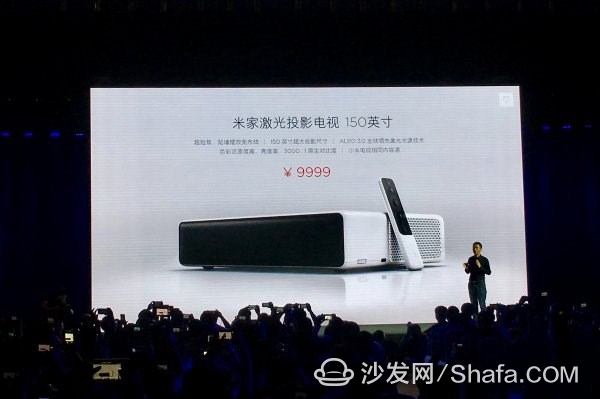
It is understood that millet laser television is essentially a laser ultra-short focal micro-cast. Why do you say that? The reason in the industry is "the TI custom DMD in millet mouth" and the brightness of "5000 lumens of light source". The former is that the light valve of millet laser TV is not a product of the mainstream market, but a smaller size (micro-projection) product; the latter is emphasized that "there is no brightness of laser television."
In fact, these two publicity efforts are mostly about playing the ball. TI customized DMD products such as this have not appeared in the projector industry. The main reason is that DMD is a semiconductor product. It has the characteristics of investment-intensive, technology-intensive, and productivity-intensive manufacturing processes: it can't be customized, it's custom-made without scale, and the cost can't be afforded by the market. "Light source brightness" is a concept that is not used in the projection circle: Projection generally refers to the luminous flux at the lens exit. The latter is only one third lower or even lower.
The concept of rubbing the ball often makes people feel "lack of dry goods." However, Xiaomi’s ultra-short focus design is true: Although it is standard for laser television, if you do not regard it as a micro-projection, then it is the only one in the world. As for the price of 9999 is not dry goods, in short, the market is not exactly the same kind of product, there is no contrast: compared with micro-investment, the price is really not low, and traditional laser television, it is really cheaper to get home.
Of course, this is still "excellent" for the laser television industry. Because laser TVs have traditional leaders such as Hisense, Roosevelt Nuts, Optoma, and BenQ, their circles are still relatively small. Even if the color TV background of Hisense, and can not be compared with the size of fans of mobile phone - mobile phone is a personal consumer goods, and updated quickly, which determines the concept of millet laser television can inevitably for the industry "breakthrough" large-scale extra points.
Event 5: Sharp Appeals Hisense
In mid-2017, Sharp filed a lawsuit against Hisense, which could be said to have caused widespread concern in the industry and became one of the hot events of the year.
It is understood that as early as 2105, Sharp's operating difficulties, serious losses, so, Hisense "solve" the Sharp North American market, took over the Sharp Mexican plant, hosting the Sharp North American brand (January 6, 2016 - January 5, 2021) sales . In this way, the essence of North American Sharp became Sharp of Hisense. This is somewhat similar to what Lenovo and IBM did with PC business.
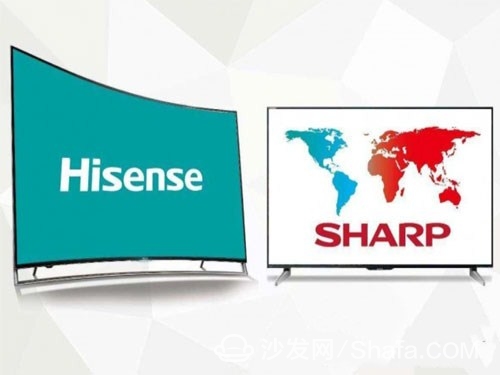
However, in 2016, Sharp experienced a major change - Taiwan's giant Hon Hai acquired Sharp. At the moment, Hon Hai is not short of money, but it lacks an "own brand." Before Hon Hai bought Sharp, relying on its upstream industry and foundry system, Hon Hai has been trying to establish its own brand empire for more than ten years.
However, the Sharp that Hon Hai got was not complete—the brand rights in Europe and North America have already been “sold outâ€. This is a fatal problem for the Sharp brand value. The core product on the Sharp terminal is the LCD TV. China, North America, and Europe are the three major TV markets in the world. Sharp actually only left the Chinese market still in its own hands. Hon Hai could not accept this situation.
Therefore, in Europe, Hon Hai successfully acquired Sharp's brand authorization in Europe by acquiring the European UMC Group. The same strategy cannot be used by Hisense. Hisense is too large to be easily acquired. Therefore, Hon Hai and Sharp chose the so-called negotiated settlement.
Due to the failure of negotiations, Sharp couldn't get much better prices in the context of its own financial resources. Sharp therefore started a series of "black" measures. According to media reports, Sharp has ceased to provide screens to Hisense (Sharp claimed to be just raising the price, during the same period on the screen supply Sharp and Samsung appeared in an open contradiction), in the United States in violation of the contract to Hisense channel channel goods, to Haixin unilaterally The letter required to stop performing the contract and so on.
However, these measures are not enough to allow Hisense to change its existing strategy. Or small means can not change the big picture. In the end, Sharp chose to use a lawsuit to solve the problem between Sharp and Hisense.
Afterwards, the Northern District Court of California made a formal ruling on the Sharp case of Hisense and supported Hisense in moving the motion and ruled that the case must be submitted to arbitration in Singapore until the completion of the case by the Singapore Arbitration Center. This time Sharp's lawsuit in the US court has not been supported, the relevant experts analyzed that Hisense's mature response here is no doubt that Chinese companies face international disputes is a textbook case.
Event 6: Mango TV enters the hardware field
In August 2017, Mango TV, the main content, launched the smart TV system MUI, announcing its full expansion into smart TV systems and hardware, and jointly building its own brand TVs with Skyworth and Gome.
It is understood that the most mentioned in the Mango TV conference is the "MUI" smart TV system, which is just one letter from Xiao Mi's "MIUI" system. There are only four main features, playing or feelings of cards, these two estimates are enough to be a joke jokes.
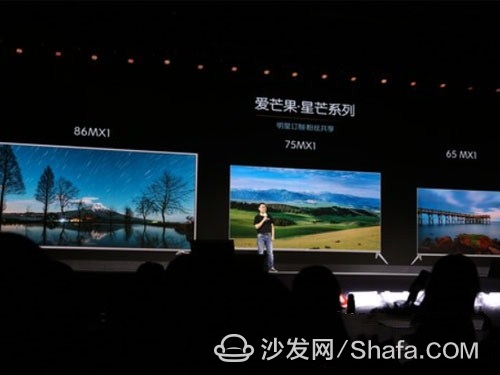
Although Xiaomi TV has also cooperated with Mango TV, its value is still its high-quality content resources. In this section, with the cooperation of millet TV, future TV, iQiyi, and other platforms, Xiaomi TV has seen more and more content, which is currently leading the industry.
Among the current holders of Internet broadcast control licenses, Mango TV will also face competition from future TVs and Galaxy TV. In the future, TV is a subsidiary of China Network Television (CNTV). The largest shareholder is CCTV, and Tencent holds. The proportion of shares is about 20%. Galaxy TV was jointly initiated and established by the Central People's Broadcasting Station, the Jiangsu Provincial Radio and TV Station, and Beijing Aiqiyi Technology Co., Ltd. These two licensees have been working in the Internet TV field for many years, and Xiaomi has also reached in-depth cooperation with them.
Another Galaxy has also reached cooperation with many mainstream manufacturers with relatively flexible policies. Can Mango TV be as flexible as Galaxy TV? Although its conference put forward a full-scale opening, it does not currently see whether there is a sharing model. If it cannot be divided, let alone competing products, it is estimated that some small video sites are not Willing to cooperate with it.
At the capital level, in November 2014, Xiaomi invested 1.8 billion yuan in iQiyi, and iQiyi was one of the initiators of Galaxy TV; Xiaomi also invested in many other video sites, and Mango TV raised money in June this year. However, 1.5 billion yuan.
Mango TV put forward a hardware plan, which will face millet as a strong competitor, and millet TV has entered the hardware field earlier than mango, and has to rely on solid workmanship, powerful performance, has won a good reputation, mango entered the bureau late, still need to explore .
In the TV industry where millet LeT has been tearing for years, let's not say anything else, whether Mango TV can withstand the first round of attack between the two is unknown? Currently, Xiaomi’s valuation is as high as US$45 billion, and the current Mango TV valuation Only 13.5 billion yuan, for a protracted war, Mango TV has no advantage.
Although Mango TV continues to extend the strong advantages of Hunan TV in terms of content, it also gained a good reputation. But to fully enter the field of Internet TV, especially the hardware side, the qualifications, the opponents have already entered the game; on the content, the tiger wolf looks around; on the capital, but not millet, so Mango TV in the hardware industry can eventually succeed, I dare not Judging by judgments, this road will certainly not be easy to go.
Event 7: Hisense sponsors the 2018 World Cup
On April 6, 2017, Hisense announced an investment of nearly US$100 million and became the official sponsor of the Russian World Cup in 2018. Hisense sponsors the World Cup. In addition to the LOGO that will appear on the venue advertisements, tickets, news backboards, and live score frames during the 2017 Confederations Cup and 2018 FIFA World Cup, more than 20 million Internet TV users of Hisense will also enjoy More exclusive resources.
As we all know, the World Cup and the Olympic Games are the two most important commercial events in the world. The 2014 World Cup in Brazil is the most valuable, most profitable and most expensive World Cup in the history of FIFA. According to data previously disclosed by the Associated Press, the FIFA business income from the World Cup in Brazil was 4 billion U.S. dollars, of which 1.4 billion U.S. dollars came from sponsorship revenues and 2.6 billion U.S. dollars came from broadcasting rights sales.
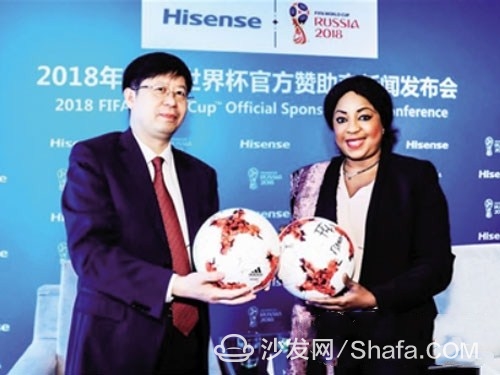
And Hisense can become the 2018 World Cup sponsor, which itself has many advantages. First of all, in financial terms, Hisense, as a multi-billion-dollar appliance group, has the financial power to spend nearly 100 million U.S. dollars to become a World Cup sponsor. In the hundreds of billions of chessboards of Hisense Group, a number of industry segments such as color TV, white electricity (Hisense Kelon), intelligent transportation, optical communication, and real estate have been formed.
Secondly, as the main business of Hisense Group, TV has a close connection with sports events such as the World Cup. Hisense's advanced display technologies and multimedia technologies such as ULED high-definition TV and large-screen 4K laser television can make in-depth technological developments such as event video presentation methods to enhance audience viewing experience.
There is also, Hisense has a unique "competition experience." From the most recent point of view, becoming the first Chinese brand to sponsor the European Cup is the best rehearsal and experience. Through the "European Cup" marketing, Hisense increased its visibility by 6 percentage points in 11 surveyed countries except China, the European market sales increased by 65% ​​in the second quarter, and the domestic television market share increased by 1.87 percentage points.
In addition, Hisense has continued to invest in the Australian Open, the US NASCAR XFINITY racing team, the Red Bull Racing F1 Team, and the Schalke 04 football team. Therefore, in addition to auditing Hisense's products and reputation, FIFA places more emphasis on its accumulated experience in a series of events. And these cannot be measured with money.
Therefore, it is not difficult for us to see that Hisense sponsors World Cup sports events, which will increase its influence in the world and lay a solid foundation for Hisense to develop its own international brands. And this big step that Hisense has shown is also the temperament that a world-class brand has.
Event 8: The establishment of the Quantum Dot Alliance
In 2017, the rapid rise of Quantum Dot TV has undoubtedly attracted widespread public attention. According to data from NPD DisplaySearch, the global demand for quantum dot materials has grown from less than 2.5 million square meters in 2015 to nearly 25 million square meters in 2020, with an average annual compound growth rate exceeding 50%; and the global quantum by 2020. The market size will reach 2.5 billion U.S. dollars, and the growth potential is huge.
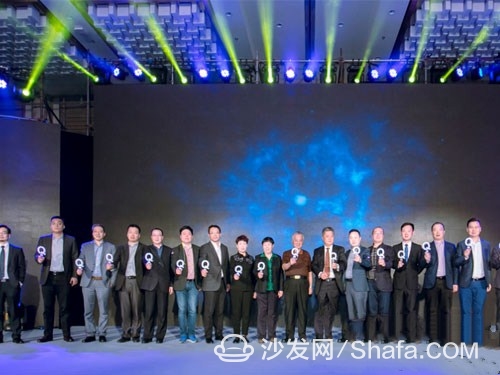
Faced with such a large market development space, color TV manufacturers have also applied quantum dot technology to color TVs in the past two years. In order to further promote the development of quantum dot TVs, Samsung, TCL, and Hisense TV giants not only vigorously promoted quantum dot TV, but also established a coalition in April 2017 to announce that 2017 QDTV will have better technology and more. Low prices and better channels hit the market.
According to the reporter, in the QD TV market, Samsung not only uses quantum dot technology on high-end televisions, but also extends it to displays and other fields. In order to form a complete upstream and downstream industry, Samsung spent US$70 million to acquire QD Vision, one of the three largest manufacturers of sub-dot materials in the world, and launched a sub-surface curved display product.
TCL uses three-color quantum dot luminescent materials, so that quantum dot television achieve 110% NTSC color gamut coverage, and made major breakthroughs in cost control. In addition, Hisense will also integrate ULED technology and quantum dot technology to promote industrial upgrading.
The establishment of the Quantum Dot Alliance not only includes terminal color TV manufacturers but also upstream raw material companies. Nanosys executives said that after 10 years of efforts, Nanosys has developed quantum-tube and quantum-dot film technologies. Nanosys technology now focuses on quantum dot films. After the industrialization of tablet computers, quantum dot technology will also achieve breakthroughs in the field of larger-sized televisions.
It can be seen that QMD QD TV sales have risen rapidly in 2017 in the high-end market in 2017, with companies such as Samsung, TCL, and Hisense gradually expanding their QLEDs. It is believed that 2018 will usher in a broader market. Market and prospects.
Event 9: Launch of the first batch of 8K TV production in China
In 2017, with the accelerated upgrade of color TV technology, “8K†has become one of the hottest keywords in the color TV industry. According to the author's understanding, in the AWE2017 exhibition, Samsung, Sony, LG, Skyworth, Konka and other companies have shown flat-screen TVs with 8K resolution, and have been highly recognized by consumers with ultra-clear image quality. Restore the most authentic audiovisual feast.
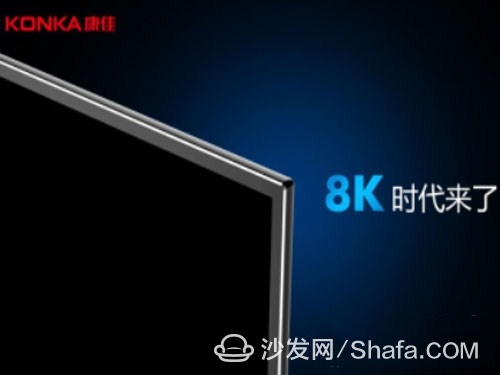
Shortly after the closing of AWE2017, Konka brought us heavy news. The 200 millionth TV offline and 8K new TV conference of Konka Group was officially held in Konka Phase II production factory in Dongguan. It indicates that the TV brand Konka Group Officially opened the curtain of "8K" TV.
The reason why Konka has become the first batch of 8K TV production manufacturers in China has a direct relationship with its own hardware production base and the advantages of the world's advanced level of product R&D. The new X86S 8K TVs released by Konka has selected the world's top LCD panels. The addition of new HDR technology, backlight partitions, 12bit color wheel engines, and DTS sound technology will enable viewers to enjoy cinema-quality audio and video entertainment.
It is worth mentioning that as the first batch of companies that launched 8K TV mass production, it is enough to explain the breakthrough and strength of Konka Group's 8K manufacturing and R&D technology. At the same time, it is also another important layout for Konka's future direction in the home appliance industry.
Konka released "8K" TV, also set the advanced nature of the home appliance industry, representing a new height of the home appliance industry in the field of large-screen technology. Driven by Konka, it will also drive the layout of more companies in the field of 8K TV. The major TV companies have to enter the "8K" TV field in the near future.
Event 10: Sony Returns to OLED Camp
In March 2017, Sony announced the official launch of the OLED TV A1 in the Chinese market. Gao Qiaoyang, chairman and president of Sony (China), said that this reflects the strategy of Sony's high-end products, and after ten years of efforts, the civilian market for OLED technology has matured.
In fact, we understand that as early as 2007, Sony had launched the world's first OLED TV, but it has been the main LCD TV. Why did Sony return to the OLED TV camp after a decade?
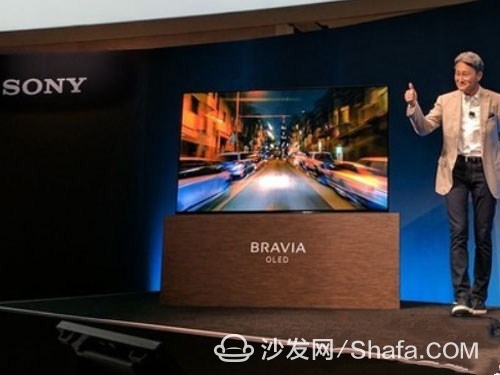
According to Sony insiders, Sony did not stop R&D of OLEDs after the product was launched a decade ago. It has been providing OLED monitors in the medical and broadcasting fields. However, if it comes to the civilian sector, it is a price issue and the second is a technical problem. After a decade of hard work, technical problems have been solved and OLED panels can be mass-produced and applied to Sony's products.
Coupled with Sony's technological accumulation on television, such as processing chips, Sony can either choose to do LCD TVs, or choose to do OLED TVs. At present, Sony will target OLED TVs for high-end products.
It is understood that in the second quarter of this year, Sony TV sales increased by 30% year-on-year. Behind the contrarian growth, OLED TVs have played a significant role in Sony's pull.
In fact, Sony's strong rise in the OLED TV market not only drives overall sales growth, but also drives the broadening of the target population. The target audience of Sony TV was originally only three types: one is the wealthy class with purchasing power; the other is the crowd interested in new technologies; and the third is Sony's fans. Now, because of the characteristics of the product, there are two types of people, fashionable young women, and professional game players.
At present, Sony is not only the first place in the high-end market in the United States, Japan, and other developed countries, but it is also establishing its leading edge in the high-end market. This has fully demonstrated to the outside world that Sony TV is entering the market's harvest period based on the creation of differentiated products.
Smart TV/box information can focus on smart TV information network sofa butler (http://), China's influential TV box and smart TV website, providing information, communication, TV boxes, smart TVs, smart TV software, etc. Answering questions.
Fork Type Terminals,Insulated Bullet Sockets Terminals,Insulated Bullet Terminals,Type Fork Insulate Terminal
Taixing Longyi Terminals Co.,Ltd. , https://www.lycopperlugs.com
